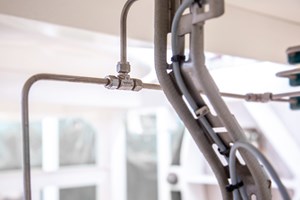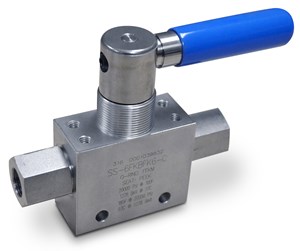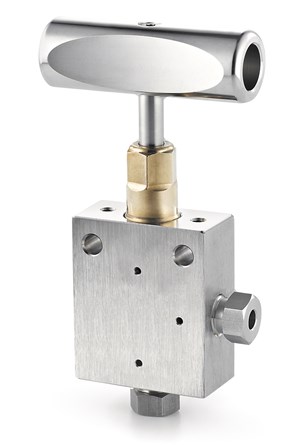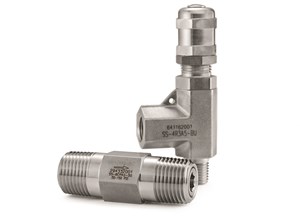Articles
From small molecules to big solutions: A green H2 vision
Valves, Pumps, Turbomachinery and Compression
P. THOMSEN, Swagelok, Esbjerg, Denmark
Hydrogen (H2) shows great promise as an alternative to fossil fuels because it is less environmentally damaging to extract, can be derived easily from multiple sources and produces no carbon dioxide (CO2) when used as a fuel. In a world searching for solutions to climate change, H2 offers significant opportunities for growth, but it also presents certain challenges.
Three impediments have hampered the widespread adoption of H2 as an energy source:
- The containment of H2 molecules is difficult because they are extremely small
- Until recently, H2 production has relied on fossil fuels, which, in turn, reduces the positive environmental effects
- The technology used to convert H2 to a transportation fuel has been underdeveloped.
The goal is to produce green H2, which is defined as H2 made by splitting water into H2 and oxygen using renewable electricity. Companies use an electrical current to separate the H2 from the oxygen in water. If this electricity is obtained from renewable sources (e.g., wind, solar), it produces energy without emitting CO2 into the atmosphere. The International Energy Agency (IEA) reports this method of obtaining green H2 would eliminate 830 MMtpy of CO2 that are emitted when this gas is produced using fossil fuels. Many companies around the world are pioneering work in bringing the promise of green H2 to fruition.
One such company is Everfuel. The organization is working with numerous industry-leading vendors to make the widespread use of green H2 a reality. The company produces green H2 to replace fossil fuels in industry processes and distribute and dispense it to fleets of H2 vehicles.
Why H2 is a preferred fuel option. Widespread adoption of H2 as a vehicle fuel depends on creating a refueling infrastructure that can safely deliver it to end users, including original equipment manufacturers and other stakeholders that are looking for long-term stability and solutions for their fleet-fueling needs.
Unlike conventional fuels that can be toxic if misused or spilled, H2 has a much more environmentally friendly profile. If suppliers use the right components in their H2 fueling systems, leaks are rare.
Additionally, H2 fueling stations automatically check that the fuel is being dispensed safely throughout the fueling process (start, midpoint, end), much like current gas stations, but the components inside these fueling stations must withstand specific H2 stressors. Lastly, the existing network of conventional refueling stations can be converted to H2 refueling stations simply, while maintaining similar refueling times to more traditional fossil fuels. To ease the transition, Everfuel is focused on building a H2 production facility to supply future refueling stations.
How the HySynergy project will transform H2 production and storage. Everfuel has completed the first phase of the HySynergy project, a 20-MW Power-to-X (PtX) facility designed to test the viability of large-scale H2 dispensing and storage. Renewable energy sources like solar and wind fuel the plant, making it totally independent from the use of fossil fuels and carbon emissions-free.
The project is not only about building a 20-MW electrolyzer (FIG. 1), it also about making a business case that this type of facility can be a sustainable business using green energy to power the future. Everfuel plans to show that H2 can be produced completely from renewable sources and then stored for future use. “We can take yesterday’s wind and turn it into today’s fuel,” explaind Jacob Krogsgaard, CEO, Everfuel. “We can even take January’s wind, turn it into fuel tomorrow, and dispense it in April if we have enough storage. That is not possible with other types of renewable energy.”

With H2 in fuel cells, the byproduct is pure water, which can potentially be used to produce more H2. “We can sell the hydrogen, use the waste from that hydrogen to make more hydrogen to sell, capture and sell the waste heat coming out of the facility, and sell the oxygen that comes out, as well,” said Krogsgaard. “In addition, you can carry more energy in the form of compressed hydrogen than you can with alternatives like batteries.”
Keeping H2 contained and compressed. The key to keeping H2 contained and avoiding component embrittlement—when the H2 enters the surrounding metal and weakens it during use—is using components designed specifically for H2 applications. Achieving a leak-tight environment is also crucial (FIG. 2).

To help mitigate H2 leaks, proprietary medium-pressure tube fittingsa from the author’s company provide a vibration-resistant, leak-tight and robust connection for proper sealing of Everfuel’s systems. The fittingsa are designed for H2 service, with higher nickel content and specially made ball valves and needle valves.
To ensure leak-free performance, it is critical to understand and specify the right valves for the system. Properly designed H2 systems often contain some combination of the following valve types.
H2 ball valves. Among the most common H2-system components are ball valves (FIG. 3), which control how much gas flows from one section of the system to the other. Since H2 is a corrosive substance, ball valves used in H2 systems should contain stem seals that resist wear. It may make sense to use a trunnion-style ball with a direct-load design, which will improve the system’s leak-tight performance. Alternatively, a bottom-loaded stem design may enhance safety by avoiding stem blowouts.

Reputable valve suppliers should guide facility managers through ball valve selection. Items to pay attention to include whether it has 2- or 3-way functionality, how it is mounted and whether it allows for a range of flow coefficients to meet the specific needs of H2 applications. Finally, ensure the selected ball valves are compatible with other system components.
H2 needle valves. While ball valves allow general flow control, needle valves (FIG. 4) offer precision in how much fluid is flowing through the system at any given time. It takes significant force to seal needle valves correctly because they are usually all metal. Unfortunately, such force can deform the needle and seat, leading to leaks and expensive maintenance. Additionally, large air actuators open and close the valves and can take as long as 2 min to achieve closure.

Reliable suppliers should offer needle valves constructed from 316 stainless steel because it resists deformation more effectively. Operators must also choose needle valves that can stand up to the pressures exerted in most H2 systems, which typically range from 350 bar–700 bar. Check with the supplier to ensure the needle valves meet those requirements. Once again, compatibility with other H2 system components is crucial.
H2 check valves. Check valves (FIG. 5) provide more safety for end users when they are employed in the H2 compressors in refueling systems. They prevent excessive backflow and protect end users from potential leak hazards. Unlike general service applications, H2 check valves must withstand specific stressors that do not apply to other valves in the system.

For example, check-valve springs, a common feature of most check valves, must be constructed of an appropriate metal that can resist potential H2 embrittlement—usually, that means 316 stainless steel. Check valves are also subject to rapid changes in temperature and pressure, which can damage the valve’s elastomer seals. In such instances, ball check valves make the most sense in H2 compressors. As with the other valves discussed, their compatibility with other H2 components is essential.
Future development of the HySynergy project. Upon completion of Phase 2, the HySynergy project will reduce carbon emissions equivalent to 11% of those from the Danish land-based transport sector. By 2030, upon completion of Phase 3, the project will further reduce Denmark’s carbon footprint and significantly contribute to achieving its climate target of 70% CO2 reduction.
NOTE
a Swagelok’s FK series
About the author
PETER THOMSEN has key account responsibility for Swagelok Denmark’s clean energy customers. Prior to that, he served as the Manager of the Custom Solutions and Field Engineering departments, and as a Key Construction Specialist.

